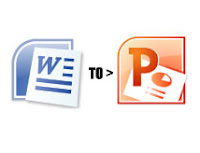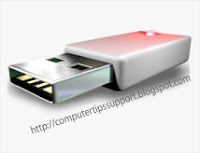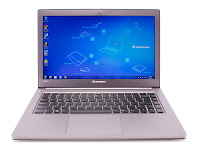A laptop, also called a notebook is a personal computer for mobile use. a laptop integrates most of the typical components of a desktop computer, including a display, a keyboard, a pointing device (a touchpad, also known as a trackpad, and/or a pointing stick) and speakers into a single unit. A laptop is powered by mains electricity via an AC adapter, and can be used away from an outlet using a rechargeable battery.
Purchasing a home or business laptop can be a much more confusing and sometimes frightening experience as most users today have some experience with a desktop computer but not as many have experience with a laptop, Portable computers are an excellent solution for anyone who needs to be laptop is a small computer have all of their information on it. Below is a listing of help and tips when considering to purchase a laptop computer.
The processor and you
When it comes to processors, go with the fastest you can afford, regardless of the notebook's form factor. You have a lot of options, so here are the basics.
Intel's Pentium M CPU line offers speed while enabling great battery life. These chips, combined with Intel's wireless LAN electronics and either the 915 Express or 855 chipset, make up Intel's Centrino mobile technology. The biggest downside is price -- Pentium Ms are still costly.
AMD's mobile processors are more affordable than Intel's, but they generally lag behind Intel's on our MobileMark tests. AMD's Turion 64 processors may change that, however. AMD says the chips will offer optimisations for high performance, wireless capability, and long battery life.
3. Screen sizes
Wide-screen notebooks, which have an aspect ratio of 16:9, offer larger, sharper, and all-around better images than their 4:3 standard-screen cousins. They're great for allowing you to have two documents or Web pages open side-by-side. A spacious 17-inch wide-screen laptop is a nice luxury if you're not planning on traveling with it.
4. Memory memiors
Having enough memory is vital to system performance, and lots of RAM lets you run more applications simultaneously. Sufficient RAM is also necessary for graphics work, image editing, and video editing, and crucial for 3D gaming. This is especially true in notebooks, because notebook graphics processors frequently have little or no memory of their own and share the main system RAM.
Operating System(OS)
OS is often heard term when you talk to the salesman in the laptop shop or to your friends. It is nothing but a software which helps you to control the computer. For example , if you enter the username and password and click logon, then you are asking the computer to logon through the operating system. Operating System(OS) is there in any computer, cell phones or Laptop.
5. Typing and mousing
As notebooks shrink in size, so do their keyboards. If possible, try some simple typing exercises before you buy. Pay particular attention to the spacebar, Shift, Ctrl, and Backspace/Delete keys. Be sure all are in a good location for your hand size and typing style.
Computing today relies a lot on mousing. With a notebook, all you get is a touch pad or pointing stick. Test the notebook's input device for comfort and responsiveness. Some touch pads include extra features, such as a dedicated area for scrolling.
6. Vying for video RAM
If you're not planning on doing much graphics work or playing 3D games, shared memory should be fine. But if you have a choice, aim for a graphics chipset that shares at least 64MB of system memory.
7. A slot for all reasons
Like a PCI slot in a desktop, a PC Card (or PCMCIA) slot in a notebook provides expansion opportunities. Additional USB and FireWire ports, wired and wireless modems, and wireless LAN radios are all available in PC Card form. PC Cards and slots come in three sizes: Type I, II, and III. Type I cards are normally used for memory, Type II for input/output devices, and Type III for mass storage and firewalls.
8. Get connected
Ports, especially USB and FireWire, are necessities, but on notebooks they're usually in short supply. At a minimum, look for two USB ports, and if you have any legacy devices, such as parallel printers, look for those ports, too. If you'd like to use a digital camcorder or iPod with your notebook, make sure the notebook has a FireWire (IEEE 1394) port. Connecting a monitor will require a VGA port. And if you want to output video to a television, find a notebook with an S-Video out.
9. Go wireless
Integrated wireless networking (Wi-Fi) has become an indispensable feature. Most notebooks ship with a choice of 802.11b or 802.11b/g. Capable of data throughput of 11Mbps, 802.11b is fine for ordinary use. Public hotspots typically use 802.11b or 802.11g.
10. Power on the go
Lithium-ion batteries have all but replaced nickel-cadmiums because they're lighter, have a higher energy density, and don't suffer from recharge-inhibiting memory effect.
Also look out for battery capacity (measured in milliamp hours, or mAh), and the number of cells. Typical batteries have a mAh rating between 2,000mAh and 6,000mAh; higher is better. Cells are the actual compartments where power is produced and can range from four to 12; the more the better.



 4:21 PM
4:21 PM

























